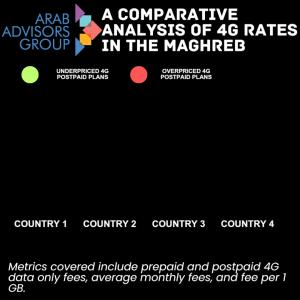
The global language of healthcare
The guide is specific to the creation of SNOMED concepts necessary to represent data elements required for adult and pediatric solid tumour cancer reporting.
— Don Sweete, CEO, SNOMED International
LONDON, UNITED KINGDOM, October 9, 2024 /EINPresswire.com/ — SNOMED International is pleased to announce the release of the SNOMED CT Clinical Implementation Guide for Cancer Synoptic Reporting, a comprehensive resource to facilitate standardized and structured reporting in cancer care. Designed to enable healthcare organizations to improve the quality of information captured, facilitate data exchange, support research initiatives, and enhance collaboration among healthcare providers, the guide provides clinicians with an overview of the content of SNOMED CT that supports cancer synoptic reporting and highlights the role of SNOMED CT in standardizing and enhancing cancer reporting practices.
Guide scope and intended use
The scope of the guide is specific to the creation of SNOMED CT concepts necessary to unambiguously represent the data elements required for cancer reporting for all adult and pediatric solid tumors as published by the College of American Pathologists (CAP) and the International Collaboration on Cancer Reporting (ICCR). The content is specific to structure pathology reporting of malignant neoplasms as specified by the CAP and ICCR.
It provides general use cases, including clinical application examples and scenarios; information models and terminology bindings; and considerations related to the technical application of cancer synoptic reporting forms with SNOMED CT. It also describes three approaches for cancer synoptic data recording – paper-based forms, distributed electronic forms and a centralized reporting platform.
The International Collaboration of Cancer Reporting (ICCR), formed in 2011, has strong support from a number of major cancer organizations globally and has grown rapidly. Notably, its membership includes the Union for International Cancer Control and the International Agency for Research on Cancer.
SNOMED CT is a comprehensive, multilingual healthcare terminology created for use by healthcare professionals to capture the care of individuals in an electronic health record and facilitate sharing, decision support and analytics, to support safe and effective health information exchange. SNOMED CT Clinical implementation guides are designed to assist both clinical and technical users in using SNOMED CT for specific clinical purposes.
Synoptic reporting
According to the American College of Surgeons, synoptic reports “present information as discrete data elements and associated responses. The synoptic report starts as a blank template, which is completed by the user. Each data element acts as a question that requires an answer selected from a list of predetermined responses. Once the template has been completed, each entry can be separately identified and extracted as a distinct unit of information.”
Cancer synoptic worksheets, checklists and tissue pathways are the prevailing form of text-based structured cancer reports based on anatomic pathology (histopathology) and molecular (genomic and proteomic) pathology assessments.
The Cancer Synoptic Reporting Clinical Implementation Guide follows the establishment of the Cancer Synoptic Reporting Project Group, which was formed in 2020 to develop comprehensive SNOMED CT concepts suitable for structured pathology reports. The group includes pathology experts who provide input from the community of practice on the development, maintenance and use of SNOMED CT in this specific domain. It is thanks to the hard work of this group that this Clinical Implementation Guide is now being published. They will update it over time based on feedback.
Helping clinicians deliver better care
SNOMED International CEO Don Sweete calls the guide’s release an important step in supporting clinicians who provide cancer care. And while ensuring that critical data elements are accurately documented and easily shared across different healthcare settings is one element of enabling better care, “standardized terminology and structured templates also help healthcare professionals streamline the documentation process, reduce variability in reporting practices, and promote adherence to evidence-based guidelines,” he notes.
Technical considerations
In addition to content relevant to clinicians, the guide also provides detailed descriptions for vendors and system developers wishing to implement the approach to cancer reporting within systems. Other features of the guide include:
-Examples of how synoptic reporting can benefit specific scenarios such as hematologic malignancy evaluations, cervical cancer screenings and neuro-oncology tumor resections, enabling synoptic reports to play a crucial role in guiding clinical decision-making and optimizing patient outcomes;
-A demonstration of how existing standards such as SNOMED CT and HL7 FHIR Questionnaires can be effectively employed to create implementable and shareable representations of synoptic reporting forms; and
-A roadmap for healthcare organizations looking to implement SNOMED CT in cancer synoptic reporting.
About SNOMED International
SNOMED International is an international not-for-profit organization that develops and promotes the use of SNOMED CT, a comprehensive, multilingual healthcare terminology created for use by healthcare professionals to capture the care of individuals in an electronic health record and facilitate sharing, decision support and analytics, to support safe and effective health information exchange. The purpose of SNOMED International is to develop, maintain, promote, and enable the uptake and correct use of its terminology products in health systems, services and products around the world.
Kelly Kuru
SNOMED International
[email protected]
Visit us on social media:
X
LinkedIn
YouTube
Legal Disclaimer:
EIN Presswire provides this news content “as is” without warranty of any kind. We do not accept any responsibility or liability
for the accuracy, content, images, videos, licenses, completeness, legality, or reliability of the information contained in this
article. If you have any complaints or copyright issues related to this article, kindly contact the author above.
![]()
Article originally published on www.einpresswire.com as SNOMED’s Clinical Implementation Guide for Cancer Synoptic Reporting supports cancer care accuracy, information-sharing




